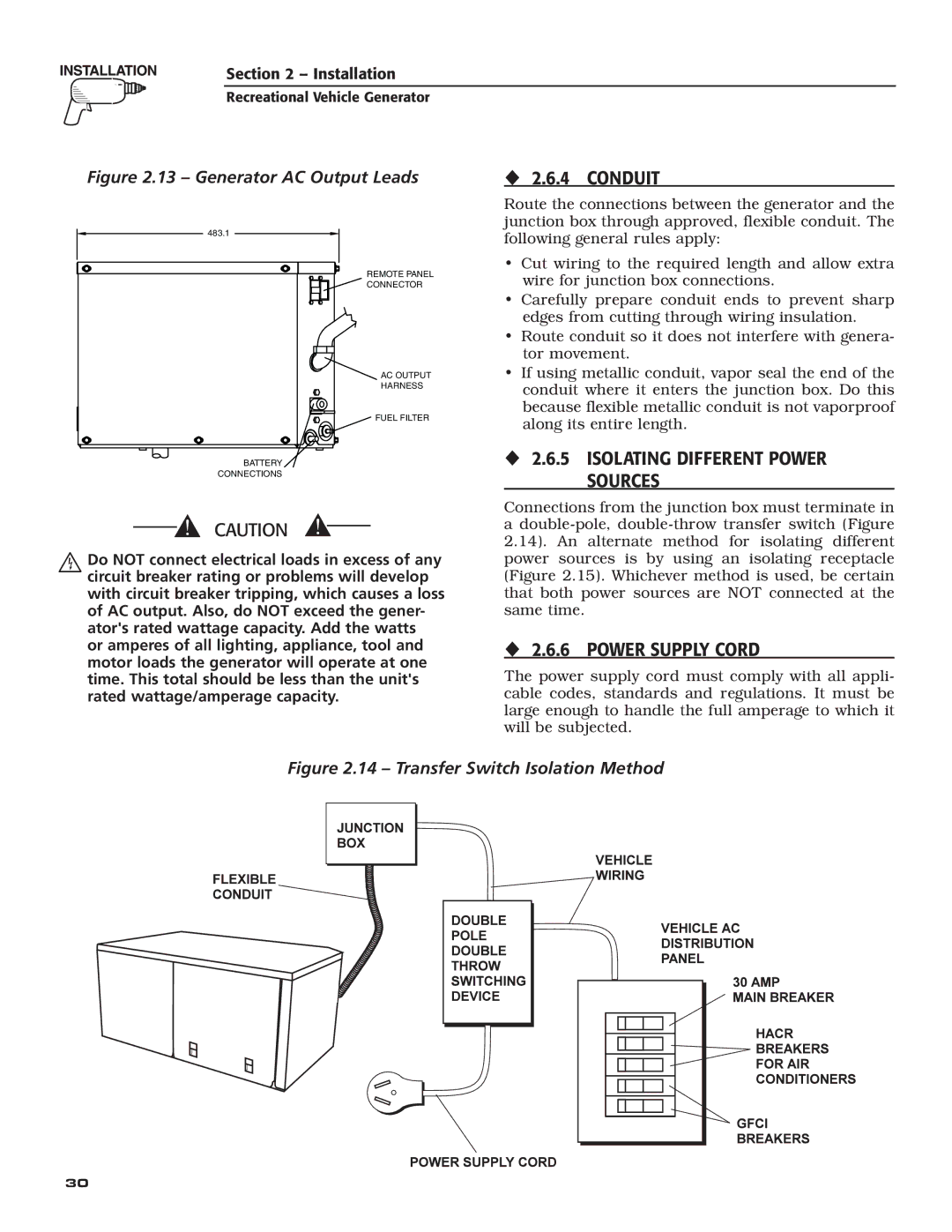
Section 2 – Installation
Recreational Vehicle Generator
Figure 2.13 – Generator AC Output Leads
483.1 |
REMOTE PANEL |
CONNECTOR |
AC OUTPUT |
HARNESS |
FUEL FILTER |
BATTERY |
CONNECTIONS |
Do NOT connect electrical loads in excess of any circuit breaker rating or problems will develop with circuit breaker tripping, which causes a loss of AC output. Also, do NOT exceed the gener- ator's rated wattage capacity. Add the watts or amperes of all lighting, appliance, tool and motor loads the generator will operate at one time. This total should be less than the unit's rated wattage/amperage capacity.
2.6.4 CONDUIT
Route the connections between the generator and the junction box through approved, flexible conduit. The following general rules apply:
•Cut wiring to the required length and allow extra wire for junction box connections.
•Carefully prepare conduit ends to prevent sharp edges from cutting through wiring insulation.
•Route conduit so it does not interfere with genera- tor movement.
•If using metallic conduit, vapor seal the end of the conduit where it enters the junction box. Do this because flexible metallic conduit is not vaporproof along its entire length.
2.6.5 ISOLATING DIFFERENT POWER SOURCES
Connections from the junction box must terminate in
a
2.6.6 POWER SUPPLY CORD
The power supply cord must comply with all appli- cable codes, standards and regulations. It must be large enough to handle the full amperage to which it will be subjected.
Figure 2.14 – Transfer Switch Isolation Method
30
